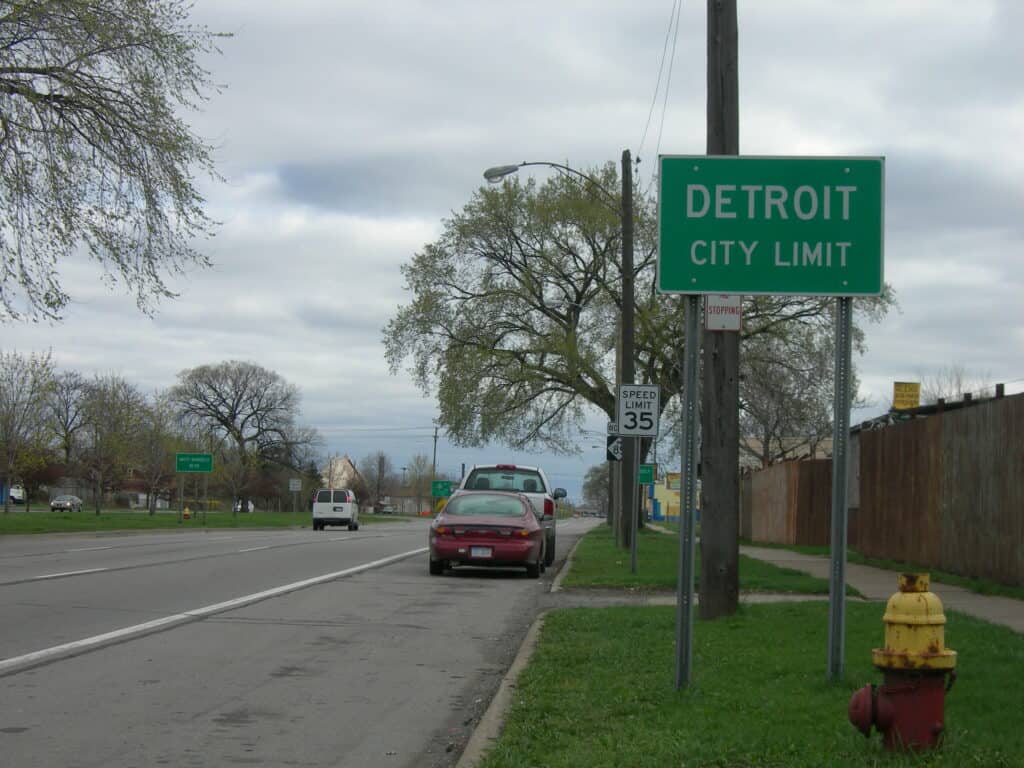Summary
There is a widening gap in who gets to access homeownership, and who is left struggling on the margins.
Key Findings
- Since 2000, both Wayne County and Detroit have become more diverse, with sharp increases in Black, Hispanic, Asian and multiracial populations.
- Wayne County’s population has grown modestly, while Detroit’s has dropped by 30%.
- White borrowers receive nearly 40% of all home loans in Detroit despite being just 10% of the population. A less-dramatic disparity in surrounding Wayne County sees the two thirds of the county population that is White receive about four fifths of home loans there.
More Diverse but Not Equal
On the outskirts of Detroit the line between the city and the rest of Wayne County may seem physically insignificant. But it is a notoriously hard border for economic opportunity. In the world of mortgage lending, the stark contrast between population demographics and access to home loans reveals two vastly different realities. This divide is not just about numbers — it is about how race and access to financial resources intersect in critical ways, shaping the future of communities and who gets to benefit from the economic opportunities homeownership provides.
In both regions, White borrowers continue to dominate the mortgage landscape, far outpacing their share of the population. Meanwhile, Black, Hispanic and other minority groups are left with fewer opportunities to access mortgage loans, despite making up a large and growing share of the population, particularly in Detroit. In fact, the gap between the share of homebuyers in Detroit whothat are Black withinamongand the overall Black population is much larger than in Wayne County, the state of Michigan and the entire US. There is a widening gap in who gets to access homeownership, and who is left struggling on the margins.
Racial Composition Shifts (2000–2020)
Decline in the White Population
Both Wayne County (excluding Detroit) and Detroit proper have seen a significant decline in their White populations between 2000 and 2020. In Wayne County, the White population dropped from 83% in 2000 to 67% in 2020, reflecting a broader national trend where White residents have migrated from urban and suburban areas to more rural regions.
In Detroit, the White population fell from 12% in 2000 to 10% in 2020. However, the sharpest decline occurred in earlier decades, as White residents left the city for the suburbs.
Growth in the Black Population in Wayne County
As the White population declined, Wayne County's Black population grew substantially. In 2000, Black residents accounted for 8% of the county’s population, rising to 15% by 2020. This shift reflects a broader pattern of suburban migration by Black residents who previously lived in urban centers like Detroit. Over the same period, Detroit’s Black population decreased from 78% in 2000 to 72% in 2020.
Hispanic and Asian Population Growth
Both Wayne County and Detroit saw steady growth in their Hispanic and Asian populations between 2000 and 2020. In Wayne County, the Hispanic population increased from 3% in 2000 to 7% in 2020, while the Asian population grew from 2% to 5%. In Detroit, the Hispanic population grew from 5% to 7%, and the Asian population increased from 1% to 3%.
Rise of Multiracial Populations
Another significant trend is the rise of the multiracial population in both Wayne County and Detroit. In Wayne County, the multiracial population grew from 3% in 2000 to 5% in 2020. In Detroit, this group increased from 2% to 7% over the same period. This trend reflects changing social norms and an increased ability for individuals to identify with more than one racial background, highlighting the growing complexity of racial identity in the U.S.
A Tale of Two Lending Worlds
In Wayne County, White residents make up 67% of the population, with Black residents representing 15%, Hispanics at 9%, and Asians at 5%. However, when looking at the distribution of mortgage loans between 2018 and 2023, the disparities become clear. White borrowers account for a whopping 79% of the loans, a far larger share than their population size would suggest. In contrast, Black residents, who make up 15% of the population, received only 10% of the loans. Hispanic borrowers also face underrepresentation, with only 4.6% of the loans, despite making up 9% of the population. Asian residents, while only slightly overrepresented in the loan data, still make up a small proportion of overall borrowers.
This creates a lending environment where White residents, despite their declining population share, have the largest access to financial resources and homeownership opportunities. Black, Hispanic, and Asian residents, on the other hand, remain on the fringes, struggling to secure the loans necessary to own a home.
Detroit: A Starkly Different Reality
In Detroit, the differences between population demographics and loan distribution are even more striking. Here, Black residents make up a staggering 72% of the population, but they receive only 55% of the loans. Meanwhile, White residents, who represent just 10% of Detroit’s population, receive 37% of the loans. This disparity is stark and represents a dramatic imbalance in the city's lending landscape. Despite being a small minority in terms of population, White borrowers dominate the mortgage market, reflecting deep-seated inequities in financial access.
Jason Richardson is NCRC's Senior Director of Research.
Photo via Jimmy Emerson on Flickr.



